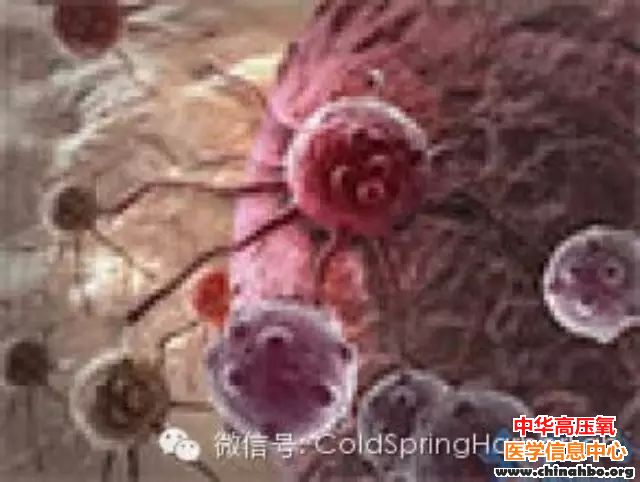Science医学突破:新型癌症氧疗法
 此主题相关图片如下:1.webp.jpg
此主题相关图片如下:1.webp.jpg
一项令人兴奋的小鼠研究表明,采用一种简单的方法:吸入更多的氧气有可能就可以促进免疫细胞去攻击癌症。研究者们将他们的研究报告发布在3月4日的《科学转化医学》(Science Translational Medicine)杂志上。
在异常细胞生长为癌症之前免疫系统通常可以找到并破坏它们。但在肿瘤设法扎根之时,它们会构建起防御来阻挡新的免疫攻击。新研究瞄准了其中的一个盾牌。
研究的领导者、东北大学新英格兰炎症与组织保护研究所所长Michail Sitkovsky说:“利用更多的氧气,你可以除去癌细胞加在抗肿瘤免疫细胞身上的刹车踏板。”
该研究的共同作者、匹兹堡大学药理学家Edwin Jackson解释说,肿瘤可以迅速地生长,速度上超过它们的血液供应,而造成低氧环境。缺氧转而刺激了癌细胞生成一种叫做腺苷的分子,腺苷可以让附近的抗肿瘤细胞T细胞和自然杀伤细胞进入休眠状态。
当前正在开展大量的研究来开发可阻断腺苷效应的药物。Sitkovsky研究小组想知道,让缺氧肿瘤得到更多的氧气是否可以除掉这种防御。
因此他们将罹患各种肺肿瘤的小鼠置于小室内模拟所谓的补氧疗法。空气中大约是21%的氧气,医院可通过面罩给予患者40-60%浓度的氧气来治疗各种疾病。
外加氧气改变了肿瘤的环境,因此免疫细胞能够进入到内部完成它们的工作。
在高氧组中肿瘤缩小更多,尤其是当研究人员结合氧及注射额外抗肿瘤T细胞这一免疫疗法时。在缺失这些免疫细胞的遗传工程小鼠中吸入氧气则没有任何影响。免疫疗法是癌症研究的一个热点领域,科学家一直试图找到刺激机体自身抗肿瘤能力的办法。
美国癌症协会免疫学家Susanna Greer(未参与该研究)说这项研究非常令人兴奋,同时她谨慎地指出必须要在人群中进行测试。“如果这种方法能够起作用,有可能能够非常容易地与我们知道的其他癌症免疫疗法协同发挥功效。”
科罗拉多大学麻醉学家Holger Eltzschig博士(未参与该研究)说:“好处在于,本身氧气就能够被很好的耐受。这些数据已足够令人信服,研究人员可以通过在某些抗癌疗法基础上增加补充供氧对这种治疗方法启动测试。”
原文摘要:
Immunological mechanisms of the antitumor effects of supplemental oxygenation
Antitumor T cells either avoid or are inhibited in hypoxic and extracellular adenosine-rich tumor microenvironments (TMEs) by A2A adenosine receptors. This may limit further advances in cancer immunotherapy. There is a need for readily available and safe treatments that weaken the hypoxia–A2-adenosinergic immunosuppression in the TME. Recently, we reported that respiratory hyperoxia decreases intratumoral hypoxia and concentrations of extracellular adenosine. We show that it also reverses the hypoxia-adenosinergic immunosuppression in the TME. This, in turn, stimulates (i) enhanced intratumoral infiltration and reduced inhibition of endogenously developed or adoptively transfered tumor-reactive CD8 T cells, (ii) increased proinflammatory cytokines and decreased immunosuppressive molecules, such as transforming growth factor–β (TGF-β), (iii) weakened immunosuppression by regulatory T cells, and (iv) improved lung tumor regression and long-term survival in mice. Respiratory hyperoxia also promoted the regression of spontaneous metastasis from orthotopically grown breast tumors. These effects are entirely T cell– and natural killer cell–dependent, thereby justifying the testing of supplemental oxygen as an immunological coadjuvant to combine with existing immunotherapies for cancer.